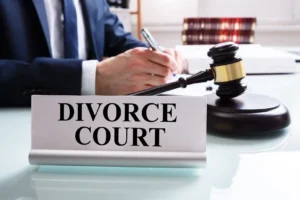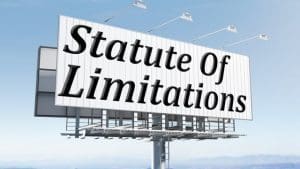What strategies do law firms use for reactive PR in response to legal industry news?
This question resonates with urgency in today’s legal landscape, where the pace of information and scrutiny is relentless. The legal profession, long steeped in tradition and discretion, now finds itself at the intersection of rapid-fire news cycles, viral social media, and a public that expects instant answers. In this environment, law firms must be both prudent and agile, blending time-honored values with modern communication tactics to protect their reputations and client interests when legal industry news thrusts them into the spotlight.
Reactive PR for law firms is fundamentally about reputation management and client trust. In law, reputation is not just an asset-it is the foundation of business and credibility. When a firm is confronted with a crisis, whether a negative news story, a controversial case, or a public misstep, the speed and substance of its response can determine not only the immediate outcome but the firm’s long-term standing. Proactive PR builds a positive image in anticipation of challenges, but reactive PR is the shield raised in the face of sudden adversity. In the digital age, where a single social media post can ignite a firestorm, reactive PR is indispensable for law firms seeking to control the narrative and limit reputational damage.
Online reputation management for attorneys and law firms is the bedrock of any reactive PR strategy. It begins with vigilant monitoring of the firm’s digital footprint-tracking not only news stories and legal publications but also social media mentions, online reviews, and even discussion forums where the firm or its attorneys might be referenced. Many firms now employ dedicated staff or advanced software to monitor these channels in real time, allowing for rapid identification of potential threats before they escalate. The logic is straightforward: problems detected early are easier to solve. When negative information surfaces, immediate action is required. Whether it’s a critical review on a legal directory or a viral post, the firm must respond swiftly and professionally, providing accurate information and context to counteract misinformation and reassure clients.
The first step in any reactive PR response is an objective assessment of the situation. Not every negative mention demands a public response; sometimes, silence is the wisest course. However, when a development threatens the firm’s reputation or involves a matter of public concern, a carefully crafted statement is often necessary. Such a statement should be factual, concise, and free of defensiveness. The aim is to clarify facts, correct inaccuracies, and demonstrate the firm’s commitment to transparency and ethical practice. For example, if a law firm is criticized for its handling of a high-profile case, it might issue a statement outlining the relevant legal principles, the steps taken to ensure fairness, and its broader commitment to justice and client service. This approach not only addresses immediate criticism but also reinforces the firm’s values and expertise.
Crisis management for law firms is a discipline that requires preparation and clear protocols. The most effective firms develop comprehensive crisis communication plans that outline roles, responsibilities, and approved messaging for various scenarios. These plans typically designate a spokesperson-often a senior partner or communications director-who is authorized to speak for the firm. The plan also specifies the channels for information dissemination, whether through press releases, social media, or direct communication with clients and stakeholders. Having a plan in place allows for a coordinated, timely, and consistent response, minimizing confusion and ensuring the firm speaks with one voice during a crisis.
A crucial element of law firm crisis management is internal communication. During a crisis, all attorneys and staff must be kept informed about the situation and the firm’s response strategy. This prevents the spread of rumors and misinformation within the organization and ensures everyone is prepared to respond appropriately if contacted by the media or clients. Internal briefings, FAQs, and clear guidance on who may speak publicly about the issue are standard components of an effective internal communication plan. The objective is unity and discipline, preventing unauthorized or inconsistent statements that could worsen the crisis.
Media relations are another pillar of reactive PR for law firms. Building and maintaining positive relationships with journalists and media outlets is an investment that pays off when a crisis hits. A firm known for professionalism and openness is more likely to receive fair and balanced coverage, even in difficult circumstances. Proactive engagement with the media-providing background information, offering expert commentary, or participating in legal education initiatives-can establish the firm as a trusted source. When negative news breaks, these relationships can be leveraged to ensure the firm’s perspective is accurately represented and the story does not devolve into sensationalism or misinformation.
Social media management is perhaps the most dynamic and challenging aspect of reactive PR for law firms. Social media platforms are both a risk and an opportunity for rapid response. A negative story or review can go viral within hours, reaching a global audience and potentially causing lasting damage. At the same time, social media offers the firm a direct channel to communicate with the public, correct inaccuracies, and demonstrate responsiveness. The key is having clear guidelines for social media engagement during crises, including designated team members for monitoring and responding, protocols for crafting and approving statements, and a strategy for engaging with key influencers or stakeholders. Social media analytics tools provide valuable insights into sentiment and engagement, informing the firm’s ongoing response and allowing for real-time adjustments.
Thought leadership is an often-underestimated strategy in reactive PR. By positioning the firm or its attorneys as experts in relevant legal areas, the firm can shape the narrative around a crisis and highlight its broader contributions to the field. This might involve publishing op-eds, participating in panel discussions, or offering expert commentary on current legal issues related to the matter at hand. For instance, if a firm specializing in employment law faces criticism over a particular case, its attorneys might contribute articles or give interviews on broader trends in employment law, reframing the conversation and reinforcing the firm’s expertise and authority.
Community engagement is another tool in the reactive PR arsenal. By actively participating in local events, pro bono work, or charitable initiatives, law firms can demonstrate their commitment to social responsibility and build goodwill. In the wake of negative publicity, highlighting the firm’s ongoing contributions to the community can help shift the narrative and showcase its values. For example, a firm facing criticism might emphasize its involvement in legal aid clinics or educational programs, reminding the public of its broader mission and dedication to service.
Ethical considerations are paramount in all aspects of legal PR. The intersection of public relations and legal practice is fraught with potential pitfalls, particularly regarding the integrity of the judicial process. Law firms must balance the need to protect their reputation with their ethical obligations to clients, the courts, and the public. The American Bar Association’s Model Rules of Professional Conduct, along with state-specific regulations, place strict limits on how lawyers can advertise and promote their services. Reactive PR strategies must be carefully crafted to ensure compliance with these rules, avoiding any statements that could prejudice a trial, mislead the public, or compromise client confidentiality.
The ethical boundaries of legal PR are tested most acutely in high-profile cases, where media coverage can influence everything from jury selection to witness credibility. The temptation to use PR to sway public opinion is strong, but firms must resist the urge to manipulate the narrative at the expense of fairness and justice. Transparency, honesty, and respect for the legal process are guiding principles. Public statements should be factual, avoid speculation, and refrain from making claims that cannot be substantiated. The primary responsibility of the lawyer is to uphold justice, not to win the PR battle.
Case studies from recent years illustrate both the power and the peril of reactive PR in the legal industry. High-profile trials and controversial cases have often seen PR firms on both sides working to shape public perception, raising questions about the ethical implications of manipulating the narrative. These examples underscore the need for law firms to tread carefully, balancing effective communication with their duty to the courts and the public.
Brand protection in the digital era extends beyond crisis response. It involves curating a consistent, authentic narrative across all platforms, from the firm’s website to its social media profiles. Consistency in branding-using the same name, logo, and messaging-reinforces recognition and trust. Monitoring for unauthorized use of the firm’s name or likeness, and taking swift action to address impersonation or trademark infringement, is essential. The goal is to ensure that the firm’s identity remains intact and its reputation is not undermined by external actors.
Negative review response is a delicate art. When a dissatisfied client leaves a critical review, the instinct may be to defend the firm vigorously. However, a measured, courteous response that acknowledges the client’s concerns and invites further discussion offline demonstrates maturity and a commitment to resolution. Prospective clients often judge a firm not by the presence of negative reviews, but by how those reviews are handled. A thoughtful response can turn a negative into a positive, showcasing the firm’s dedication to client satisfaction and ethical practice.
Law firm crisis management also encompasses preparedness for reputational threats arising from cyberattacks, data breaches, or high-profile litigation. In such cases, transparency and accountability are paramount. Firms must communicate promptly with clients and the public, providing updates and demonstrating a commitment to resolving the issue. Investing in cybersecurity, maintaining robust data privacy policies, and conducting regular risk assessments are essential steps in protecting both the firm’s reputation and its clients’ sensitive information.
Attorney brand protection involves defending against online defamation and misinformation. False or misleading statements can damage a firm’s reputation and erode client trust. While legal remedies such as cease and desist letters or defamation lawsuits may be appropriate in extreme cases, most situations are best handled by correcting the record through factual, non-confrontational communication. Proactively publishing accurate information and positive content helps ensure that misleading narratives do not dominate search results.
Online client testimonials are powerful tools for building trust and credibility. Prospective clients are more likely to engage with a firm that showcases real experiences from satisfied clients. When requesting testimonials, firms must obtain written consent and ensure compliance with bar association advertising rules. Displaying testimonials on the firm’s website, social media, and legal directories amplifies their impact and reinforces the firm’s reputation for excellence.
Reputation management for law firms is not solely the responsibility of marketing or public relations teams. Every attorney and staff member plays a role in shaping the firm’s reputation through their interactions with clients, colleagues, and the community. Fostering a culture of professionalism, integrity, and responsiveness at all levels is essential. Regular training on client communication, ethical standards, and digital best practices ensures that everyone understands their role in protecting and enhancing the firm’s reputation.
Online reputation monitoring should be an ongoing process, utilizing both automated tools and manual checks. Setting up alerts for the firm’s name, attorney names, and key practice areas allows for early detection of potential issues. Periodic manual searches can identify content that may not trigger automated alerts, such as forum posts or news articles. Early detection enables prompt, effective responses.
Legal reputation monitoring extends to tracking mentions in legal industry publications, bar association newsletters, and court records. Positive coverage in these outlets can enhance the firm’s credibility, while negative mentions may require a strategic response. Building relationships with legal journalists and industry influencers can help ensure that the firm’s perspective is represented accurately in the media.
Law firm client trust is earned through consistent, ethical behavior and transparent communication. Keeping clients informed about case progress, billing practices, and any changes that may affect their matters is essential. Proactively addressing concerns and resolving disputes before they escalate creates a virtuous cycle that strengthens the firm’s reputation over time.
Attorney reputation management is especially critical for solo practitioners and small firms, where the reputation of the individual attorney is inseparable from that of the practice. Personal branding-through speaking engagements, published articles, and active participation in professional organizations-can elevate an attorney’s profile and attract high-value clients. Maintaining a professional online presence, including a polished website and active social media profiles, showcases expertise and values.
Law firm crisis management should include regular scenario planning and tabletop exercises to prepare for potential reputation threats. Identifying the most likely risks-such as data breaches, negative press, or high-profile litigation-and developing response plans for each is prudent. Assigning roles and responsibilities in advance, and ensuring that all staff members know how to escalate issues appropriately, ensures readiness.
Legal reputation management is an investment in the firm’s future. The benefits extend beyond client acquisition to include better employee retention, stronger referral networks, and greater resilience in the face of challenges. A positive reputation can also influence judicial perceptions, opposing counsel’s willingness to negotiate, and the outcomes of complex legal matters.
In today’s political climate, law firms must also navigate the risks of being associated with controversial clients or causes. The experience of major firms responding to attacks from political figures illustrates the complexity of balancing client representation with public perception. Some firms choose to publicly affirm their commitment to representing all clients, regardless of political considerations, while others seek to distance themselves from controversy to protect business interests. The calculus is often influenced by the potential for retaliation, the expectations of clients and employees, and the broader implications for the rule of law.
Ultimately, the strategies law firms use for reactive PR in response to legal industry news are rooted in a commitment to truth, transparency, and ethical practice. The tools may evolve-incorporating the latest digital monitoring platforms, crisis communication protocols, and social media analytics-but the underlying principles remain constant. Reputation is built over years but can be lost in an instant. By embracing a disciplined, principled approach to reactive PR, law firms can weather the storms of controversy, protect their most valuable asset, and continue to serve clients and the public with integrity. The legal industry’s future belongs to those who can adapt to the demands of the digital age without sacrificing the core values that define the profession.
Citations:
- Best Practices for Law Firm Reactive PR and Crisis Response
- Trump Faces Law Firm Sanctions: Major Questions and Industry Impact
- Effective Reactive PR Strategies for Legal Professionals
- Reputation Management Now a Top Priority for Law Firms
- Ethical Considerations in Legal PR and Public Relations
- Reactive PR and Legal Marketing Strategies for Attorneys (Spanish)
- Comprehensive Guide to Law Firm Reputation Management
- Crisis Management Solutions for Law Firms
- Managing Online Crises with Reactive PR for Attorneys
- Scholarly Article on Legal PR and Crisis Communication
- Research Paper: Law Firm PR Strategies and Outcomes
- Key Strategies to Enhance Law Firm Public Relations
- Vital PR Strategies and Challenges in the Legal Sphere
- How to Execute Reactive PR: Step-by-Step Guide
- Trump Administration Targets Law Firms in Court Battles
- Top PR Strategies for Law Firm Success
- 5 Steps to Creating a Purpose-Driven PR Plan
- Mastering Proactive and Reactive PR: A Double-Edged Sword
- Law Firms’ Deals with Trump Deepen Industry Rifts
- Reddit Discussion: Effective Law Firm Marketing Methods
- Comprehensive Guide to Law Firm Public Relations
- Proactive vs. Reactive PR in Crisis Management
- How Law Firms’ Deals with Trump Affect Politics
- Understanding Proactive PR vs. Reactive PR for Law Firms
- Four PR Strategies to Build Law Firm Brand Awareness
- The Rise of Digital Legal PR for Modern Law Firms
- Big Law Firms Shun Conservative Clients: Politics and Attorneys
- How Legal PR Helps Lawyers with Media Relations
- Guide to Media Bias and Trust in News Sources
- National Law Review: Legal News and Analysis
- Navigating Law Firm Business Strategy Amid Political Pressures
- Should You Trust Media Bias Charts?
- Trump and Big Law: 12 Questions on Recent Attacks
- Successful Law Firm PR Campaigns: Case Studies
- Lessons in Law Firm Reputation Management for Political Clients
- Introduction to Legal Issues in Public Relations
- ABA Compliance and Legal Marketing Best Practices
- Rising Expectations and Ethical Challenges in Legal PR
- Everyday Public Relations: A Primer for Lawyers
- Law Firm Public Relations: Building Reputation and Trust
- Compliance Essentials for Law Firms
- Ethics, Copyright, and Legal Considerations in PR Practice
- Digital PR Trends in the Legal Sector
- The Natural Conflict Between Legal and PR Departments
- Biggest Challenges Facing Legal PR Professionals
- 10 Ethical Concerns Every PR Professional Should Address
- PubMed Article: Legal PR and Reputation Management
- Research on Law Firm PR and Crisis Communication
- Attorney Marketing Strategies: Page 4 Resources
- Reactive PR for Law Firms (Spanish)
- Legal Technology Trends in Attorney Marketing Videos (Spanish)
- Glossary: Crisis Communication Plan for Law Firms
- Professional Development for Attorneys (Spanish, Page 2)
- Building a Strong Online Reputation for Law Practices
- Civil Litigation Professional Issues (Spanish, Page 2)
- Resilience Strategies for Legal Professionals
- Attorney Marketing Videos: Additional Resources (Spanish, Page 3)
- Managing Comments and Reviews on Attorney Facebook Pages
- Understanding the Back Channel in Legal Communications
- Legal Consultation Resources: Other Legal Issues (Page 2)
- Research: Legal PR and Crisis Response
- Scholarly Article: Legal PR in Crisis Situations
- Research: Law Firm PR and Communication Practices
- Study: Law Firm PR and Public Perception
- Legal PR Research: Response Strategies
- Law Firm PR: Academic Analysis
- Research: Law Firm PR Approaches
- Study: Legal PR and Crisis Management
- Law Firm PR: Best Practices and Insights
- Reactive PR Services for Law Firms
- Law Firm Public Relations: Strategies and Tools
- What Is Reactive PR? Definition and Examples
- Research: Legal PR and Communication Trends
- The Rise of Legal PR: Strategic Necessity in Public Opinion
- Complex or Clickbait? Examining Media Bias Charts
- Navigating Law Firm Business Strategy Amid Political Pressures
- Lawyers Master Reactive PR to Combat Negative Activity
- PR’s Role in Compliance: Avoiding Transparency Issues
- Research: Law Firm PR and Crisis Management
- PubMed Article: Legal PR and Public Perception
- Open Access Article: Legal PR Strategies and Impact
- Research: Legal PR and Crisis Communication
- Open Access Article: Law Firm PR and Reputation
- Research: Legal PR and Crisis Response
- Academic Study: Legal PR and Industry Trends
- PubMed Article: Legal PR and Ethics
- Law Firm Reactive PR: Strategies and Examples
- Proactive vs. Reactive PR for Law Firms
- Legal Challenges Facing Sports Leagues




















